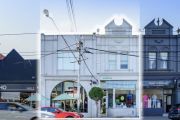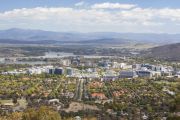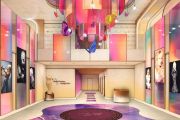
Potts Point set to be the commercial property hotspot in inner Sydney in 2017
Potts Point will be at the epicentre of feverish activity in the commercial property market on the eastern fringes of the city this year, experts say, as the area undergoes an upheaval brought on in part by the well-publicised changes to the lockout laws.
Long-time owners of commercial buildings in the Kings Cross area, which is part of Potts Point, are cashing in on the insatiable demand for land from residential developers, who are prepared to pay top dollar for buildings that were used as shops, offices and backpacker accommodation.
The inner-eastern fringe of the city that includes suburbs such as Darlinghurst, Potts Point, Surry Hills and Woolloomoolloo has been a magnet for commercial property transactions in the past 12 months, with Surry Hills and Woolloomoolloo especially popular, according to a new report from Ray White Commercial.
Samuel Hadgelias, of Ray White Commercial NSW, said there were more than 150 commercial sales valued at $369 million in the inner east in 2016 with Surry Hills accounting for 45 per cent of those transactions.
Surry Hills was just edged out for average values by Woolloomoolloo, with an average of $13,592 per square metre compared with $13,988 per square metre.
But neighbouring Potts Point was”yet to boom” in comparison with these suburbs, as the ongoing transition instigated by the state government’s lockout laws and demand for residential development sites pointed to a strong sales year, said CBRE’s Gemma Isgro.
“The majority of stock in Potts Point is freehold buildings, with retail tenants throughout and commercial tenants throughout who are obviously struggling with the recent lockout laws, because the retail and hospitality trade has slowed a lot,” she said.
“All these buildings that are traditionally commercial use have a residential angle on them (courtesy of mixed-use zoning) and that’s where the pricing is coming in from the market.”
 256 Crown Street, Darlinghurst, which is currently being marketed by CBRE. Photo: Supplied
256 Crown Street, Darlinghurst, which is currently being marketed by CBRE. Photo: Supplied
Backpacker businesses in particular were susceptible to the transition happening in the suburb, as it shakes off its traditional party image, Ms Isgro said.
“A lot of restaurateurs are coming into the area, and a lot of the backpackers are moving out of the area, so a lot of those vendors are selling now, especially on Victoria Street,” she said.
“The return that you get on the retail value is just not equalling what it should be, and obviously the backpacker market has slowed down there because it’s not really a destination for tourists anymore.”
One building at 256 Crown Street, Darlinghurst, being sold by Ms Isgro, and her colleagues Michael Khouri and Nicholas Heaton, has been held by the same owners for more than 20 years.
She said long-term investors throughout the inner-east, who had held on to assets for decades, were deciding 2017 was the time to sell, with many choosing to redirect the sale proceeds to commercial buildings further out from the CBD.
“We’re finding a lot of the smart vendors who’ve owned these assets for years and years and years are now realising we’re at the top of the market, it’s the most strategic time for them to maximise their exit strategy and that with a lot of the funds from these buildings their money can be working better for them elsewhere,” she said.
 152 Riley Street, Darlinghurst, was sold on a 5 per cent yield. Photo: Supplied
152 Riley Street, Darlinghurst, was sold on a 5 per cent yield. Photo: Supplied
Mr Hadgelias from Ray White, said that favourable interest rates, lucrative redevelopment projects and a tight CBD office market were all working in the city fringe’s favour.
“In addition to potential redevelopment, the strength of the office market in the city fringe can further be explained by the tight Sydney CBD vacancy environment, currently just 6.20 per cent (January 2017),” Mr Hadgelias said.
“This demand is unlikely to subside into 2017 given the low interest rate environment and appetite for quality, well-located assets which will result in further expansion of the capital value range achieved and continued lows in investment yields.”
Some high-profile sales in the inner east by last year included 152 Riley Street, Darlinghurst, for $18,101,000 and 23-47 Flinders Street, Surry Hills, for $14.8 million.










